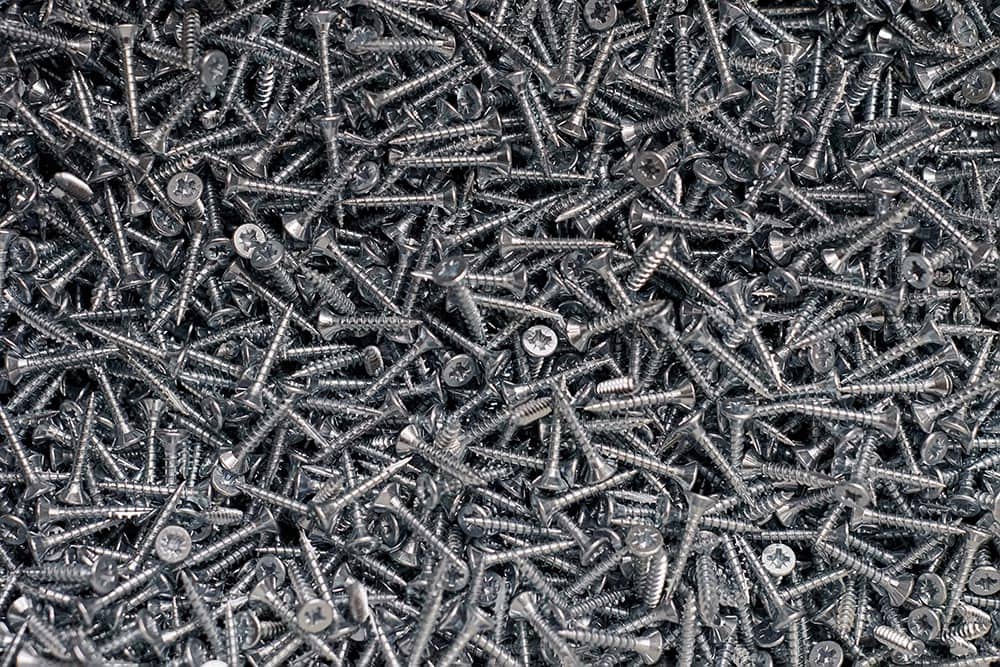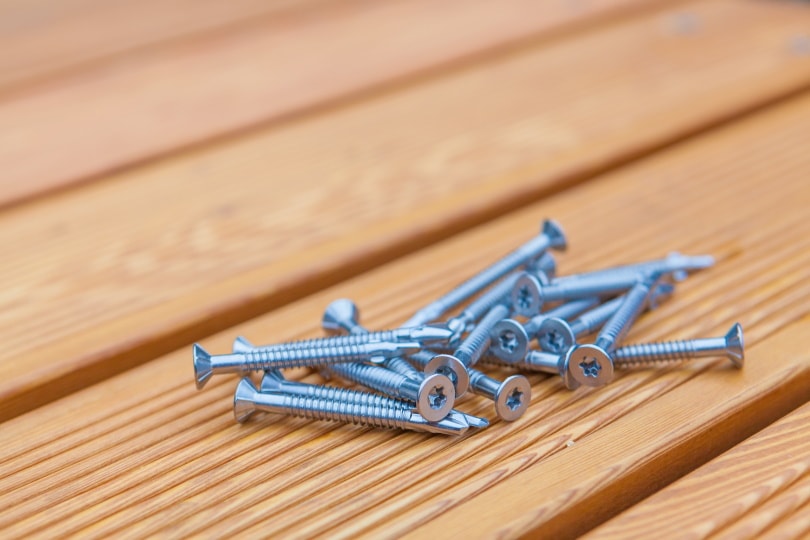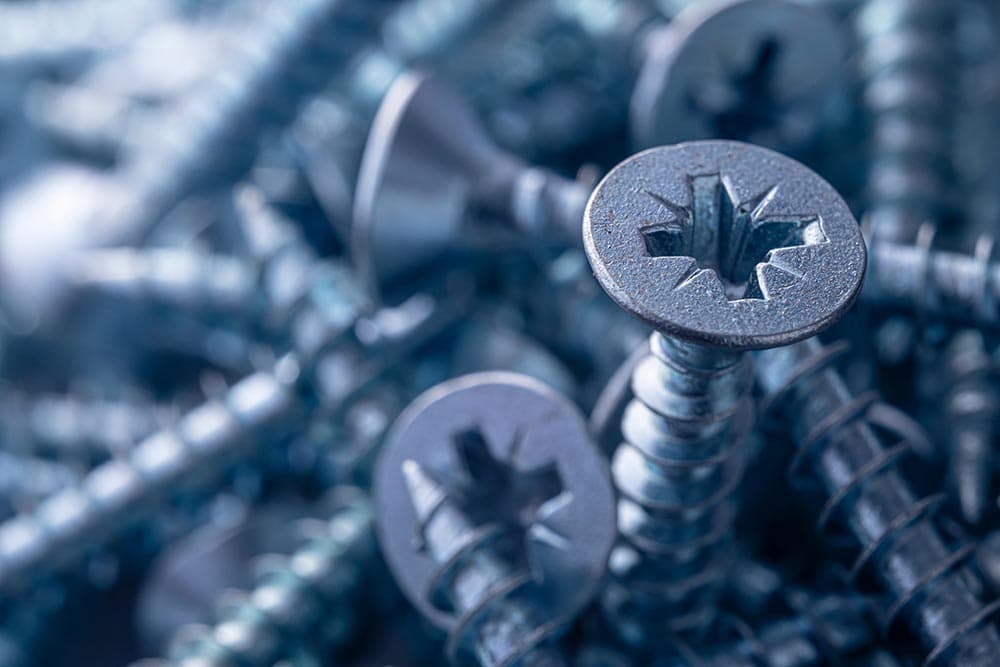How Are Screws Made? History, Types & Material
-
Pete Ortiz
- Last updated:

If you are wondering how the screws in your cupboard can hold such a large amount of pressure, we have an interesting explanation. There are several steps in making strong, durable, and high-quality screws, and to understand the process, we have to look inside the factory and at how their machines work.
The machines make screws with a process called thread rolling—the newest technique that allows for maximum productivity. We will talk a bit more about thread rolling in the article below.
A Brief History of Screws
The first factory to manufacture screws was opened in 1810 in Rhode Island. Before the first screw factory, the screws were handmade, and mass production and use were impossible. The ancestors of the first screw manufacturing factory were automatic screw-cutting devices that could produce ten screws per minute. While this was acceptable, it still wasn’t good enough to meet the requirements of mass production. Thanks to the newest technology, a cold heading machine produces between 100 and 550 screw blanks per minute.

Screw Design
What’s interesting about screws is that they come from a single coil of wire about 0.75 inches wide. The wire has to come from the highest-quality metal to avoid cracking the screws under a lot of pressure, and the materials that usually go into making screws are cold hard steel, and carbon. The steel wire can have a coat of zinc, nickel, chromium, or cadmium for additional strength and protection.
Types of screws
When it comes to different screw types, there are several options available on the market. You can differentiate screws by the screw heads, which can vary by shape, material, and features. The purpose of the screw head is to remove the screw easily and quickly without damaging it. They are usually made from stainless steel with a corrosion-resistant coating. There are a lot of different screw types, including:
- Flat Head
- Pan Head
- Socket Cap Head
- Button Head
- Ultra-Thin Head
- Pancake Head
- Fillister Head
- Oval Fillister Head
- Oval Flat Head
- Cheese Head
- Undersized Pan Head
- Pan Washer Head
Materials used in screws
Steel
Being one of the most affordable materials on the market, steel is a widespread material in the screw manufacturing industry.

Aluminum
Aluminum is not a standard when it comes to manufacturing screws because it is not as durable as other materials. Still, it is very lightweight, which gives it an advantage.
Titanium
Titanium screws are a blend of strength and lightweight. Screws made of titanium are among the strongest screws on the market. They come at a higher price, but their durability is worth it in the long run.
Copper
Copper is an excellent material to use if you want to ensure your screws are safe from corrosion. If you frequently expose screws to different elements and factors, it would be best to use a copper screw to ensure a long-lasting life span, safe from corrosion.
The Manufacturing Process
Below, we will explain how factories make screws step by step to give you a better view of this simple yet fascinating process. The cold heading process can, on average, create up to 550 screws per minute, while the thread rolling process can create up to 2,000 parts per minute.

Straightening the wire
This interesting process begins with the wire going through the pre-straightening machine. It has to pull the wire perfectly straight because if there are any imperfections in the steel, it can make screws significantly weaker. The wire is coated in a powdered lubricant to reduce friction.
Cutting down to size
The wire then goes through the die, a hole slightly smaller than the diameter of the wire, making the wire straight and smooth. The die also cuts the wire exactly three-quarters of an inch wide.
Cold forging screw blanks
The cold forging machine cuts the wire to length and hammers it into bolts or screw blanks. This machine is called a “cold forging” machine because it is not necessary to heat the steel before hammering it in shape, which makes the molecules in the bolts tighter.
Making screw heads
The screw blanks then go into a machine that makes the screw heads in three short and quick steps. The machine consists of dies—molds in the shape of a screw. The first die slams the screw blanks with incredible force, compressing the steel to have a thicker top. The second die flattens the head, and the third die trims the sides of the head to create a hex.
Creating the grooves or threads
The final and crucial step of this process is creating the groves, the essential part of a screw. The machine pushes the screw blank between two plates inside a threading machine. The sides of these plates hold the shape of the screw threads and cut the grooves in the screw blank. The screws are squeezed through the threading machine and come out with spiral grooves.
Final Thoughts
Even though screw production uses a generally simple and quick process, it is also highly complex in its design. It requires machines that operate perfectly and operators that help set up these machines and tweak them to produce a consistently high-quality end product.
Hopefully, this article gave you a better insight into how these machines work and how they make strong enough screws to make the everyday life of a DIYer much easier!
- See also: 7 types of hacksaw frames and blades
Featured Image Credit: travelarium.ph, Shutterstock
Contents



